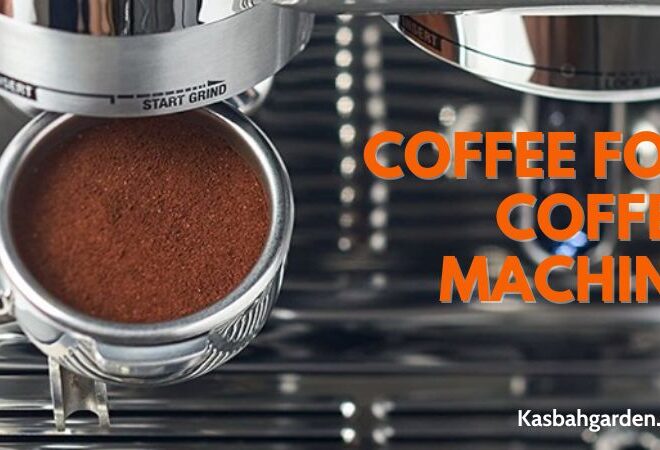How to Store Your Ground Coffee? | Wake Up to Freshness
Understanding Coffee Freshness
The Science Behind Coffee Freshness
Coffee is at its peak of flavor immediately after roasting when the natural oils are most aromatic. Unlike wine, it does not improve with age. In fact, the opposite is true. Coffee begins to degrade in quality from the moment it is roasted. But why does coffee go stale so quickly? There are four main culprits that contribute to loss of flavor and aroma in coffee beans and grounds: oxygen, moisture, heat, and light.
Oxygen causes oxidation, which makes coffee taste flat and bitter. Coffee oils are damaged when exposed to oxygen.
Moisture accelerates the staling process and causes flavor degradation. Moisture also promotes mold growth.
Heat accelerates the evaporation of aromatic compounds, leading to a rapid decline in taste and smell.
Light damages coffee oils through photooxidation. Direct sunlight or prolonged artificial light destroys the compounds responsible for flavor.
Understanding these deteriorating forces is the first step toward storing coffee effectively. By minimizing exposure to oxygen, heat, light and moisture, you can keep beans fresh for much longer.
Roast Date’s Impact on Storage
The timing of when coffee beans were roasted greatly impacts how they should be stored for maximum freshness.
- Coffee is optimally enjoyed within 4 weeks after roasting. Product dates printed on packaging indicate the roast date, not a use-by date.
- For peak flavor, brew within 2 weeks of the roast date. The shorter the period between roasting and brewing, the better the taste.
- Coffee stored for longer than 1 month after roasting will have noticeable flavor loss but can still be enjoyed within 2-3 months.
- After 3 months, significant staling occurs. Oils dissipate, aromatics fade, and off-flavors develop.
With the roast date in mind, you can determine the best storage method to extend freshness based on when you plan to enjoy the coffee. Use short-term storage for coffee you’ll drink within a month and long-term storage for coffee you are cellaring for later.
Advanced Storage Techniques and Considerations
Nitrogen Flushing and Vacuum Sealing
The gold standard for preserving coffee is to remove oxygen by vacuum sealing or nitrogen flushing. Exposure to oxygen causes rapid staling, so eliminating it keeps coffee tasting fresh for many months. Commercial methods like vacuum sealing are easy to replicate at home.
Vacuum sealing involves sucking all the air out of an airtight bag holding the coffee. Without oxygen, staling cannot occur. Food saver appliances allow vacuum sealing at home. Just place coffee in a specially designed bag, remove the air, and seal.
Nitrogen flushing displaces oxygen by flooding storage containers with inert nitrogen gas. Special canisters with a valve allow you to spray gaseous nitrogen inside before sealing the lid for long-term preservation.
While not mandatory for short-term storage, these methods are the best way to halt staling for medium and long-term storage goals. Even just one week of vacuum sealing can make a noticeable improvement in retaining freshness.
Environmental and Economic Considerations
Along with maximizing freshness, many consumers also aim for their coffee storage solutions to be:
- Eco-friendly – reusable containers and bags reduce waste.
- Economical – proper storage saves money by reducing waste of expensive coffee.
- Space-saving – efficient and compact storage.
Thankfully, many of the most effective storage methods for maintaining freshness also satisfy these additional considerations. Prioritizing glass, stainless steel or ceramic over plastic cuts down on waste. Buying quality storage containers saves money by protecting your investment in great coffee. And choosing streamlined, stackable containers conserves precious cabinet space.
The Comprehensive Coffee Storage Debate: Pantry vs. Freezer
Now that you understand the science behind coffee preservation, two storage methods stand out as the best for home use: the pantry and the freezer. Which reigns supreme? The answer depends on your specific needs and preferences. Let’s compare the pros and cons.
Pantry Storage: Benefits and Guidelines
For short and medium-term storage of up to one month, the pantry is perfectly acceptable and easier than freezing. Here are guidelines for proper pantry storage:
- Place in an airtight container, like a ceramic, stainless steel or glass jar with rubber gasket seal.
- Use a dark container or store inside a cabinet away from light.
- Choose a cool spot in the pantry, ideally from 60-70°F. Avoid storing near appliances that emit heat.
- Keep beans and grounds in separate containers since grounds stale faster.
- For added freshness, use a container with a one-way CO2 valve that allows gas release while preventing oxygen getting in.
Benefits: More convenient access, no thawing required, retains nuanced flavors better. The pantry is great for coffee you plan on drinking within a month.
Freezer Storage: When It’s Appropriate
For long-term storage of over one month, freezing is best for slowing the aging process. Follow these tips:
- Use an airtight freezer bag after pressing out excess air. Freezer-grade plastic won’t impart flavors.
- For the freshest taste, divide coffee into portion-sized bags to minimize air exposure when opening.
- Freezing stops the coffee’s aging clock but does not reverse staling. Freeze as soon as possible after buying.
- Allow beans to reach room temperature before grinding to avoid condensation compromising flavor.
Benefits: Eliminates oxygen and halts staling entirely for storage up to 3-6 months. Great for buying coffee in bulk or when sales shopping.
The verdict? Try both for yourself and see which suits your preferences. The pantry offers better short-term convenience, while freezing locks in long-term freshness. Use both techniques to get the most out of your coffee investment.
Special Focus on Ground Coffee
Storing coffee beans poses enough challenges. But keeping ground coffee fresh presents a much greater difficulty due to the increased surface area exposed to oxygen. Follow these ground rules for maximizing your morning grinds.
Storing Ground Coffee: 7 Essential Tips
- Buy in small batches – only grind what you’ll use within a week.
- Grind right before brewing if possible for ultimate freshness.
- Choose an airtight container like a sealed jar instead of just using the original bag.
- Eliminate as much air as possible: press, shake, and flatten packs of ground coffee before sealing.
- Store in the freezer for any time period over 2-3 days.
- For freezer storage, divide ground coffee into single-serve portions in airtight bags.
- Avoid refrigerators/fridge doors as they can introduce moisture, causing grounds to clump.
Taste Impact: Pantry vs. Freezer Stored Coffee
With such a short shelf life, tasting the difference between pantry and frozen storage for ground coffee is revealing.
Pantry-stored grounds taste notably weaker and flatter within a week as the aromatics fade. Rancid flavors emerge within 10 days.
Frozen grounds retain close to full potency for at least a month when stored in single-serve bags. Thawed grounds taste nearly indistinguishable from fresh for up to 4 weeks.
Clearly, the freezer wins for ground coffee storage. But for the freshest, fullest taste, the ideal solution is simply grinding beans right before brewing whenever possible.
Coffee Storage Containers and Innovations
Coffee’s enemies – oxygen, light, heat and moisture – dictate the ideal design characteristics of storage containers. Let’s explore specialized canisters, accoutrements, and newly emerging tech that target extending coffee shelf life.
Selecting the Best Container
Here are the most important considerations when selecting containers for coffee storage:
- An airtight seal is the #1 priority – look for an integrated rubber gasket or vacuum-sealed design.
- Opaque or tinted materials prevent light damage. Avoid clear containers.
- Ceramic, glass and stainless steel are ideal materials that won’t transfer odors or flavors.
- A wide mouth makes scooping easier. Measure the diameter of your scoop before purchasing.
- Stackable containers conserve space while modular ones allow custom sizes.
- Consider functionality like built-in grinders for no-fuss fresh grounds with minimal air exposure.
By keeping these criteria in mind as you shop, you’ll find the perfect storage vessels to keep your coffee stash fresh.
Innovations in Coffee Storage Technology
Specialty coffee storage is now being revolutionized through new technologies:
- Vacuum canisters use a pump to manually remove the air before sealing. This professional technique can now be implemented at home.
- Smart containers detect CO2 levels electronically and alert your phone when beans are staling. No more guessing!
- Single-serve coffee capsules hermetically seal pre-measured portions of ground coffee to entirely eliminate oxygen exposure until use.
- Reusable K-cup pods allow you to fill your own fresh coffee into single-serve pods instead of being limited by pre-ground blends.
As methods like vacuum canisters and smart containers become more widely available to consumers, expect incredible advances in homemade coffee freshness.
Seasonal, Climate, and Specialty Coffee Storage
The basics of coffee storage apply universally, but may need tweaking based on environmental factors or bean varietals. Here is how to tailor your approach:
Adjusting Storage by Climate
Depending on your local environment, take these additional precautions:
- In hot climates, refrigerate or freeze beans even for short-term storage, as heat rapidly accelerates staling.
- Where humidity is high, be vigilant about using absolutely airtight containers, as moisture damages beans.
- For regions with large temperature swings from night to daytime, insulate containers to minimize heating and cooling cycles.
Your geographical location can significantly affect how quickly coffee goes stale. Make small adjustments to your storage to counteract environmental threats.
Specialty Coffee Storage Nuances
Trendy single-origin and high-end coffees have unique storage needs:
- Use smaller containers and minimize headspace since less coffee is on hand.
- Drink within 2 weeks of roasting to appreciate subtle tasting notes before they fade.
- Consider splurging on advanced storage like vacuum canisters or nitrogen flushing to do fine beans justice.
- Note that light roasts stale faster than dark roasts, as there is less internal oil to protect the beans. Adjust storage accordingly.
Delicate flavors and aromas of prized beans warrant premium storage tactics to live up to their full potential.
Practical Tips and DIY Solutions
Don’t let limited space or money prevent you from storing coffee effectively. With a bit of creativity, you can implement practical DIY solutions using common household items.
DIY Coffee Storage Solutions
- Use mason jars for an economical airtight solution. For large batches, explore vacuum sealing jars.
- Repurpose peanut butter jars or other glass food containers with rubber gaskets. Ensure all food odors are eliminated before use.
- Try freezing coffee in ice cube trays for single-serve portions to limit air exposure. Transfer to a freezer bag once frozen.
- For an ultra-economical option, re-purpose a wine vacuum bottle by storing beans in the empty vessel.
With simple materials on hand, anyone can craft DIY coffee storage devices in a pinch. Don’t let lack of fancy equipment be an excuse for stale beans.
Maintenance and Cleaning of Containers
To keep containers performing their best, be sure to:
- Check seals periodically and replace worn gaskets.
- Replace containers that absorb coffee oils or odors over time.
- Hand wash glass and ceramic containers. Avoid harsh detergents.
- Use baking soda or lemon water to remove coffee residue or smells.
Proper maintenance preserves the integrity of your storage solution. Investing in quality containers also means they’ll stand the test of time.
Health, Safety, and Brewing Quality
Beyond just great taste, proper storage also keeps your coffee safe and brew-friendly. Don’t undermine all your efforts by overlooking key health and safety considerations.
Health and Safety Considerations
Air, moisture, and warmth create an environment ripe for mold growth in coffee. Signs of mold include:
- Visible white or black fuzz
- Cloudy coffee liquids
- Stinky, musty odor
Discard any container showing mold immediately. Mold spores are harmful if consumed. Keeping coffee dry and airtight prevents mold formation.
Storage’s Effect on Brewing Quality
Stale coffee not only tastes bad – it can actually alter the quality of your brewing:
- Oils turning rancid change extraction
- Loss of aromatic gases leads to weak body
- Energy-less coffee dulls flavors
- Reduced crema formation with espresso
Proper storage optimizes your beans for their best possible brewing. For the full sensory coffee experience, freshness is crucial. Don’t sabotage great beans with ineffective storage.
Cultural Insights and Debunking Myths
Understanding various cultural approaches to coffee storage can provide inspiration. Let’s also clear up some common misconceptions.
Global Traditions in Coffee Storage
- In Ethiopia, coffee is stored green in burlap sacks in ventilated rooms. Local consumption means short shelf lives.
- Turkish coffee is ground extra fine into a powder for immediate brewing to maximize freshness.
- Vacuum packing became popular for transporting green coffee beans internationally to Europe and the Americas in the 1800s.
- In Latin America, locally-roasted beans are sealed in foil-lined bags to be used up quickly.
- Asian tea rituals influence storage in ceramic jars and frequent small-batch grinding.
Cultural wisdom offers lessons about valuing freshness that we can still apply today for ideal home storage.
Coffee Storage Myths Debunked
Now let’s separate fact from fiction when it comes to proper storage:
MYTH: The freezer causes coffee to take on moisture.
FACT: Frozen beans are unchanged if in an airtight container. Any condensation occurs after thawing.
MYTH: Dark roasts last longer than light roasts.
FACT: Dark roasts stale comparably quickly. All roast levels need proper storage.
MYTH: Used coffee grounds can be reused.
FACT: Used grounds immediately begin deteriorating and should be composted.
Equipped with truths, you can store coffee confidently without getting misled.
Enhancing Reader Engagement
Let’s recap what we covered through some interactive elements to engage readers further:
Interactive Quiz: Discover Your Ideal Coffee Storage Solution
[Insert quiz allowing readers to identify factors like coffee consumption, brewing habits, environmental conditions, budget, etc. and receive a personalized recommended storage solution.]
Reader Tips and Stories
[A section for readers to share their own storage tricks, tips, and taste test findings.]
Expert Q&A
[Interviews with professional roasters, baristas, and coffee shop owners about their experiences with dialing in coffee storage and preserving freshness.]
Conclusion: Key Takeaways
To store ground coffee properly, follow these tips from various sources:
- Use an Airtight Container: Seal the grounds in an airtight container to maintain freshness.
- Avoid Moisture: Keep coffee away from air, moisture, heat, and light to preserve its quality.
- Pantry Storage: Store ground coffee or whole beans in an opaque, airtight container on a pantry shelf for freshness.
- Keep It Dry: Ensure the storage spot is dry to prevent exposure to moisture; avoid storing in the refrigerator or near heat sources.
- Room Temperature: Store coffee grounds at room temperature in a sealed container for optimal freshness; while not ideal, refrigeration is acceptable but not recommended.
Visual Aids and Further Learning
Infographic: Coffee Storage at a Glance
[Create infographic visually summarizing ideal storage do’s and don’ts]
Further Learning and Resources
To take a deeper dive into coffee storage and preserving the flavor of your favorite roast, check out these additional resources:
- [List 3-5 recommended books, publications, references, multimedia, etc.]
When armed with the fundamentals, everyone can implement better coffee storage. Transform your daily cup and taste the rewards of perfectly preserved freshness. Here’s to never having a stale sip again!



Best way to store ground coffee?
Vacuum seal it? Make 3 bags so you have anough for a couple of days. This way the rest of the coffee stays fresh a little bit longer because they can stay closed longer.
How should you store pre-ground coffee?
“Personally I would keep it in the fridge. My colloquial evidence has show that it preserves the taste longer as long as two things hold true:
Your fridge does not contain strong odors
Your use an airtight storage medium”
You might as well learn something from the experience. So try and keep notes of how your coffee tastes each brew and see if you can detect what actually changes in your cup as your grounds get staler and staler. Then when your parts arrive compare your first cup with fresh grind to your notes.
Thank you for letting me know this information.